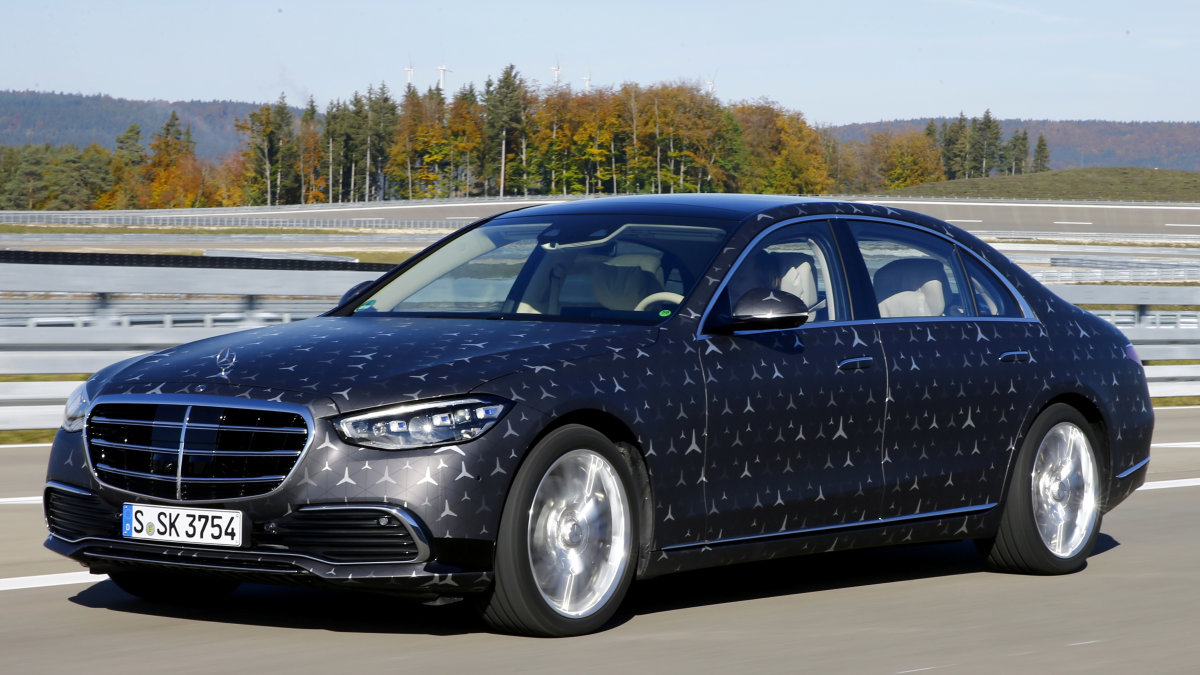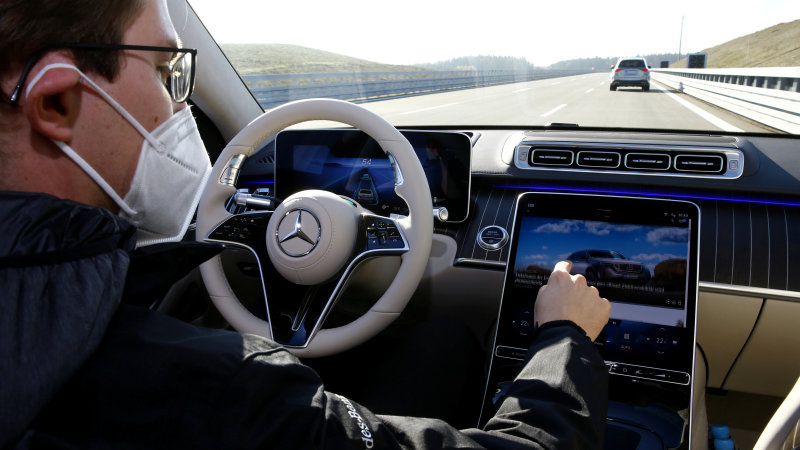IMMENDINGEN, Germany – While Tesla praises the advanced nature of its new Full Self Driving software, rival Mercedes-Benz says it has developed a similar system but doesn’t allow the public to drive it on urban roads.
The Germans, pioneers in developing advanced driver assistance systems (ADAS), are taking a step-by-step approach to release new technology, while waiting for their own engineers, rather than the general public, to validate their system.
Both approaches – a conservative and a radical in nature – are designed to push highly automated driving on public roads, a move that could dramatically reduce the number of accidents, as computers have a faster reflex to avoid accidents than humans.
Advanced driver assistance systems can assist with steering, braking and acceleration under limited conditions, usually on highways. Automakers don’t rely on their technology to help cars navigate city traffic.
Tesla broke with this tradition last week when it released its FSD software that allows its computer-controlled cars to practice their reflexes in inner-city traffic situations, warning that its cars “do the wrong thing at the worst.”
Mercedes does not allow members of the public to test experimental systems any more. The engineers must pass one fitness exam to become test drivers, and another one to test automated driving systems, the automaker said.
Rather than forcing their customers to trust processors, software, and machines’ ability to learn over time, the Germans want their cars to be validated by engineers so they remain predictable to owners.
“We don’t want blind faith. We want informed trust in the car. The customer needs to know exactly what the car can and cannot do,” a Mercedes spokesperson told Reuters on the sidelines of the car manufacturer’s test track in Immendingen, Germany.
“The worst would be if the car gets into a complex situation and there is a lack of clarity as to whether the car is in control or not,” he said.
This is why the Stuttgart-based automaker, owned by Daimler AG, highlights its decades of experience with automated driver assistance systems in gaining global regulatory approval for its proprietary Drive Pilot system with level 3 automation.
Level 3 means that the driver can legally keep his eyes off the wheel and that the company, in this case Daimler, must accept insurance liability, depending on the jurisdiction.
The new Tesla system forces customers to take responsibility for every crash.
‘LOGICAL NEXT STEP’

Mercedes-Benz started with camera-based systems in 2009, providing traffic light recognition and lane assistance systems, and switched to stereo cameras in 2013 to add depth of field and pedestrian recognition for emergency braking functions.
It was during a joint development project between the Tesla Model S and the Mercedes-Benz electric B-Class that Tesla’s CEO, Elon Musk, learned about camera and radar-based assistance systems, senior engineers familiar with the project told Reuters.
Mercedes plans to launch Drive Pilot next year, pitching it as an evolution of its Distronic system, launched in 2013, which uses cameras and radar to keep cars in the lane and at a distance from the vehicle in front.
Drive Pilot adds a new sensor, Lidar, for cross-reference data collected by radar, ultrasonic sensors, high-definition mapping, radar and cameras.
“It’s a paradigm change from Distronic, but it’s a strategic evolution. For us this is the logical next step and it is not rocketing,” said Michael Decker, manager of automated driving at Mercedes-Benz Cars. on the sidelines of the company’s test campus in Immendingen, where the Mercedes is honing autonomous driving systems.
Decker, behind the wheel of the new S-Class, drives the car up a stretch of road that has been mocked to mimic an autobahn and selects Drive Pilot. The car glides seamlessly and provides gentle braking and steering inputs to maintain its place in moving traffic.
“I spend most of my time handling edge cases, those special situations that we need to control,” he said. The Mercedes Drive Pilot only works at a maximum speed of 60 kilometers per hour and achieves higher speeds if the legal framework permits.
It will only function on motorways in Germany from mid-next year, if a new law is passed.
“When the car crosses the border into France, it shuts down because we use high-definition mapping as one of our validation systems, and France has not created the legal framework for this system to work,” said Decker.
While Mercedes engineers are aware of Tesla’s more aggressive approach to marketing their systems, they look unflappable.
“Yes. We have always followed this path. And now we see that we have the right strategy,” said Decker.
“What comes first here is safety. This is about having a mature system. Mercedes safety standards are above everything else, including speed.”
(Reporting by Edward Taylor in Frankfurt; edited by Matthew Lewis)
Related video:
